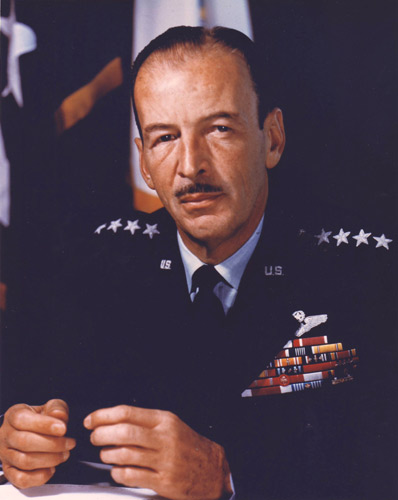Sunday Book Review: Architect of Air Power

Brian Laslie (who some of you may remember from an episode of Foreign Entanglements a while back) has a new book out on Laurence Kuter, a sometimes overlooked member of group of officers who helped establish the US Army Air Force as a fighting organization, and later the US Air Force as an independent service in the US national security bureaucracy. Architect of Air Power investigates Kuter’s career from his early years in the US Army to his retirement as Chief of NORAD.
Laslie details Kuter’s early career in the Army, providing a useful window into how the institution adapted to post-World War I American life, not least the advent of Prohibition. Kuter didn’t immediately see aviation as his future, but became interested after noticing the inadequacy of aerial observation during artillery exercises. After surviving flight school (and Claire Chennault) Kuter eventually found himself at the Air Corps Tactical School in Alabama, first as a student and then as an instructor. This placed him at the center of the braintrust that developed the plans that would become daylight strategic bombing. When war loomed Kuter was dispatched to a staff position in Washington, where he helped assemble the core plan for how the Army Air Corps (soon to be the Army Air Force) would wage war against Germany.
Even after war broke out, George Marshall and Hap Arnold found Kuter too valuable to subject to a combat command, shuffling him across various staff posts from DC, to Britain, to the Med, and to the Pacific. Kuter’s staff skills were far more important to the ability of the USAAF to successfully implement its campaign than any field command would allow. Kuter and other senior officers were formally barred from flying missions over Germany, out of concern that they would be too recognizable and too valuable as prisoners of war. Kuter also had the job of managing tensions between Hap Arnold and Alexander de Seversky, who quite disliked each other despite the latter’s role as an advocate of airpower.
Kuter remained with the Air Force after the war, helping it through the nuclear and jet revolutions. He played an important part in the Berlin Airlift, and helped establish air transport and rescue systems that matured during the Korean War. Kuter also had a prominent role in the establishment of the US Air Force Academy and the Air University, which sought to put the USAF on an even intellectual par with the Army and the Navy. He finished his career at NORAD, establishing a sophisticated system of air and missile defenses intended to protect the United States and Canada from the incipient Soviet bomber fleet.
Kuter was undoubtedly a believer in the efficacy of the strategic bomber, both as a weapon of war against Germany and as an instrument for winning the independence of the Air Force. As Laslie notes, his underestimation of the utility of the bomber in anti-submarine work, and more generally of the threat that pursuit aircraft could pose to bomber formations, were fully inline with the biases inherent in advocacy of strategic airpower. However, at least with regard to the relevance of fighter aircraft, Kuter was hardly inflexible. He was capable of learning the lessons of the early part of the air campaign, and then applying those lessons in useful ways to how the Air Force would organize itself.
The most useful takeaway from Architect of Air Power is made plain by its title. Military institutions really are vast bureaucracies, and they need talented, innovative bureaucrats in order to function properly. Kuter helped establish the ideational foundation of US airpower (and “helped” is the key term here; he was part of a team), then helped construct the institutional bones of the US Army Air Force, then worked hard to put meat on those bones. Kuter was other things as well, and likely would have been a competent field commander, but the US military hierarchy realized that it could best leverage his talents in the bureaucratic realm.
Kuter’s career witnessed the immensity of technological transformation in military aviation over the course of the twentieth century. He first experience with Army aviation involved a DH-4 biplane; one of his last flights came in an F-106 Delta Dart, as he commanded the vast missile, radar, and interceptor infrastructure that constituted NORAD. Laslie offers a fine overview of this period, from a point of view on the emergence of the national security state that is not often well-appreciated.



